Enhance Your Sketching Skills: A Month-Long Plan
Are you ready to take your sketching skills to the next level? Whether you’re a complete beginner or someone looking to refine your abilities, this month-long plan is designed to help you enhance your sketching prowess step by step. Each week, we’ll dive into different techniques and exercises that will not only improve your skills but also ignite your passion for art. So, grab your sketchbook, some pencils, and let’s get started on this exciting journey!
As we embark on this adventure, remember that sketching is not just about perfection; it’s about expression and exploration. Each stroke of your pencil is a step towards discovering your unique artistic voice. Throughout the month, you’ll face challenges, but you’ll also experience moments of joy and creativity that will make it all worthwhile.
In the first week, we’ll focus on the foundations of drawing. This is crucial because having a strong base will support all your future sketches. You’ll learn about line quality, shapes, and shading—elements that are essential for creating realistic and compelling drawings. Think of this week as laying the groundwork for a beautiful building; without a solid foundation, everything that follows may crumble.
Moving into the second week, we’ll sharpen our observational skills. This week is all about looking closely at the world around you. You’ll practice drawing real-life subjects, which will help you capture proportions, perspectives, and intricate details that add depth to your sketches. It’s like training your eyes to become more attuned to the beauty of everyday life.
- How much time should I dedicate each week? Aim for at least 30 minutes a day. Consistency is key!
- Do I need expensive materials to start? Not at all! A simple pencil and paper will do just fine to begin with.
- What if I don't see improvement? Remember, progress takes time. Keep practicing, and you will see results!
By the end of this month, you’ll not only have improved your technical skills but also developed a deeper appreciation for the art of sketching. So, are you ready to unleash your creativity and embark on this transformative journey? Let’s dive into the first week and start building those essential skills!

Week 1: Foundations of Drawing
In the first week of our month-long sketching journey, we will dive into the foundations of drawing. Think of this as the bedrock upon which your artistic skills will be built. Just like a sturdy house needs a solid foundation, your sketches require a firm grasp of essential techniques to flourish. This week, we will explore key concepts such as line quality, shapes, and shading. By mastering these fundamentals, you will set yourself up for success in the weeks to come.
First up, let's talk about line quality. Lines are the building blocks of any drawing. Different types of lines can convey various emotions and dynamics. For example, a jagged line can express chaos, while a smooth, flowing line can evoke calmness. Spend some time practicing lines of different thicknesses and textures. Grab your pencil and try creating a series of lines on a page. Notice how changing the pressure alters the line's character. This exercise will not only warm up your hand but also enhance your control over your drawing tools.
Next, we move on to shapes. Every complex object can be broken down into simple shapes. This is a crucial skill that will allow you to sketch more accurately. Take a moment to look around you and identify the shapes that make up the objects in your environment. For instance, a coffee mug can be simplified into a cylinder, while a human figure can be represented by basic geometric forms. To practice this, try sketching everyday objects by focusing solely on their basic shapes. This method will help you improve your proportions and overall composition.
Now, let’s delve into the world of shading. Shading adds depth and dimension to your sketches, transforming a flat image into a lifelike representation. Begin by familiarizing yourself with different shading techniques such as hatching, cross-hatching, and stippling. Each technique offers a unique way to represent light and shadow. For instance, hatching involves drawing parallel lines, while stippling uses dots to create texture. Experiment with these techniques on a simple shape, like a sphere, to see how shading can create the illusion of volume.
To help visualize the relationship between these concepts, here’s a simple table summarizing the key elements you’ll be focusing on this week:
| Technique | Description |
|---|---|
| Line Quality | Exploring different types of lines and their emotional impact. |
| Shapes | Breaking down complex objects into simple geometric forms. |
| Shading | Using various techniques to create depth and dimension in your sketches. |
As you progress through the week, remember to keep your sketchbook handy. Document your exercises, thoughts, and observations. This will not only track your progress but also serve as a source of inspiration for future sketches. By the end of this week, you should feel more confident in your ability to create strong foundations for your artwork.
So, are you ready to embark on this artistic adventure? Grab your tools, unleash your creativity, and let’s lay the groundwork for your sketching skills. Happy drawing!
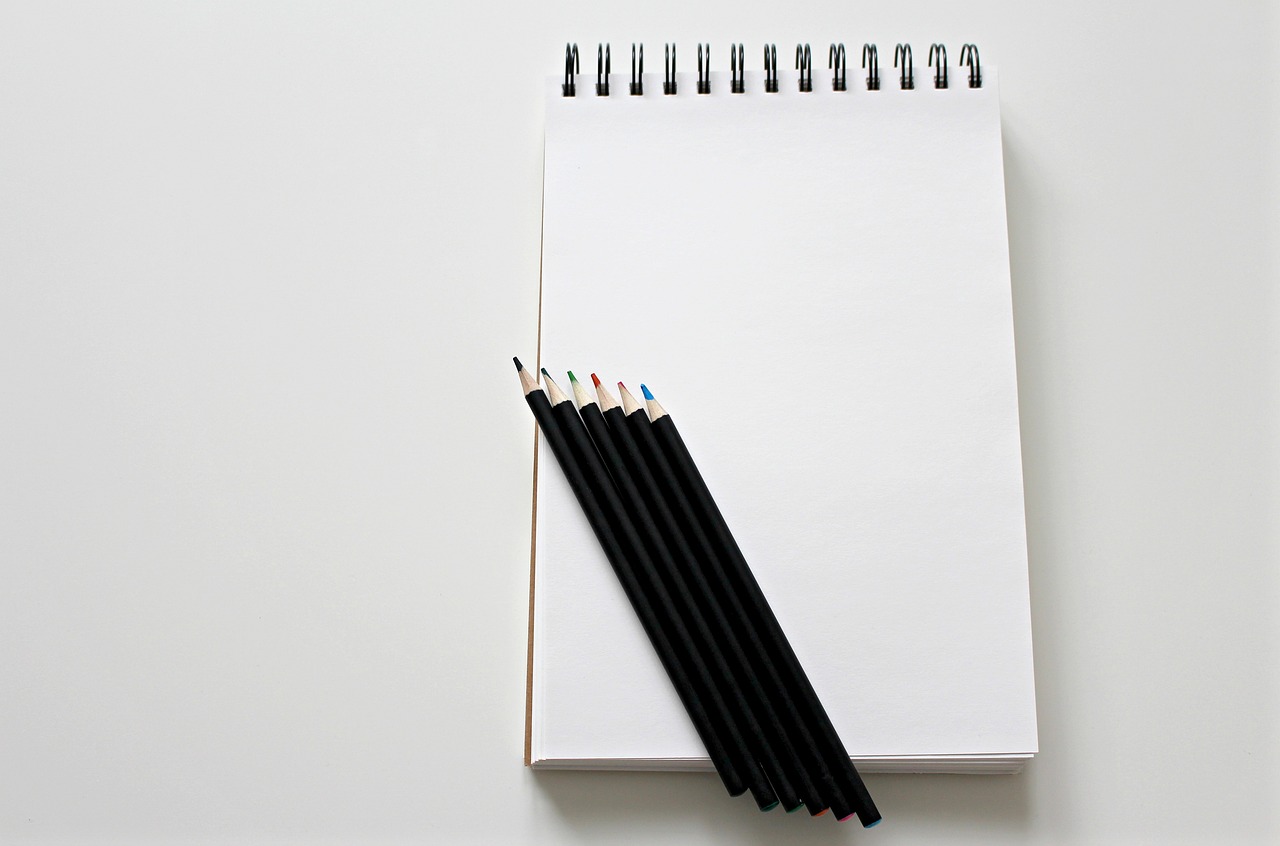
Week 2: Observational Skills
Welcome to Week 2 of your sketching journey! This week is all about honing your observational skills, which are crucial for any artist. You might be wondering, "Why is observation so important?" Well, think of it this way: if you want to create lifelike sketches, you need to train your eyes to see the world as it truly is. Observational drawing helps you capture proportions, perspectives, and intricate details that can elevate your sketches from basic to breathtaking.
To kick things off, you'll want to practice still life drawing. This exercise is fantastic for focusing on composition and the way light interacts with objects. By setting up a small arrangement of items—perhaps a fruit bowl or a collection of interesting objects—you can dive into the world of shapes and shadows. You'll learn how to observe the relationships between objects and how light affects their appearance, which is essential for creating depth in your sketches.
Engaging in still life drawing is like having a mini art studio at home. You can choose objects that challenge you, pushing your skills to new heights. When selecting your objects, consider the following:
- Variety: Choose items with different textures and shapes to keep things interesting.
- Contrast: Mix light and dark objects to practice your shading techniques.
- Size: Incorporate objects of varying sizes to work on scale and proportion.
By experimenting with these elements, you'll improve your ability to depict realism in your sketches.
When it comes to choosing your still life objects, think outside the box! Instead of just apples and oranges, why not include a textured fabric or a shiny metal object? The more diverse your selection, the more you'll learn about different surfaces and how they reflect light. This variety will challenge your observation skills and help you convey realism effectively.
Speaking of light, let's talk about lighting techniques. The way you light your still life setup can dramatically change the mood of your sketches. For instance, using soft, diffused light creates gentle shadows, while harsh, direct light can produce strong contrasts. Experimenting with different lighting conditions will not only enhance your understanding of volume and depth but also allow you to convey emotion through your art.
Another fantastic way to improve your observational skills is through gesture drawing. This technique is all about capturing the essence of a subject quickly. You might be thinking, "How can I draw something in just a few minutes?" Well, the key is to focus on the overall movement and form rather than getting bogged down in details. Set a timer for one to five minutes and sketch what you see. This practice will help you develop fluidity and confidence in your sketches, allowing you to capture the spirit of your subjects effortlessly.
In conclusion, Week 2 is all about sharpening your observational skills through still life and gesture drawing. By paying attention to the world around you and practicing regularly, you'll be amazed at how your sketching abilities will flourish. So grab your sketchbook, set up your still life, and let your creativity flow!
| Question | Answer |
|---|---|
| How can I improve my observational skills? | Practice drawing from life regularly, focusing on different objects and lighting conditions. |
| What should I include in my still life setup? | Choose a variety of objects with different shapes, sizes, and textures to challenge yourself. |
| How long should I spend on gesture drawing? | Start with short sessions, around 1-5 minutes per sketch, to capture the essence of the subject. |

Practicing Still Life
Engaging in still life drawing is not just an exercise; it’s a gateway to understanding the intricacies of composition, light, and form. When you set up a still life, you’re creating a miniature world where every element interacts. This practice allows you to focus on how objects relate to one another and how light plays across their surfaces, revealing textures and shapes that might be overlooked in a fleeting moment. Think of it as a dance between light and shadow, where you, the artist, are the choreographer guiding the viewer’s eye across your canvas.
To get started, consider choosing a variety of objects that will challenge your observational skills. A well-curated still life can include:
- Textures: Mix smooth surfaces like glass with rough ones like wood.
- Shapes: Combine geometric shapes like cubes and spheres with organic forms like fruits or flowers.
- Colors: Incorporate different colors to see how they interact under varying light conditions.
When selecting your objects, think about their arrangement. The composition is crucial in still life drawing. You want to create a visual flow that guides the viewer’s eye from one object to another. Consider using the Rule of Thirds to position your focal points effectively. This technique involves dividing your canvas into a grid of nine equal parts and placing key elements along these lines or at their intersections, creating a more dynamic and engaging composition.
Now, let’s talk about lighting. The way you illuminate your still life can dramatically alter the mood and depth of your sketches. Experiment with:
- Natural Light: Position your setup near a window and observe how the changing sunlight transforms your scene throughout the day.
- Artificial Light: Use lamps or spotlights to create strong contrasts and dramatic shadows.
- Diffused Light: Soften harsh shadows by using a sheer curtain or a white sheet to diffuse the light source.
As you practice, pay close attention to how light affects the volume of each object. Notice the gradients of light and shadow on a rounded object, or how light can create a halo effect around a translucent surface. These observations are key to enhancing the realism of your sketches.
In conclusion, practicing still life drawing is an invaluable part of your artistic journey. It’s not just about replicating what you see; it’s about interpreting the world around you. As you immerse yourself in this practice, you’ll find that your sketches become more dynamic, engaging, and full of life. So gather your objects, set up your scene, and let your creativity flow!
Q: What materials do I need for still life drawing?
A: You can start with basic materials like pencils, charcoal, or ink. A sketchbook and an eraser are also essential. As you progress, you might want to experiment with colored pencils or pastels.
Q: How long should I spend on a still life drawing?
A: The duration can vary based on your skill level and the complexity of the setup. Beginners might spend 30 minutes to an hour, while more experienced artists might take several hours to refine their work.
Q: Can I use photographs instead of real-life objects?
A: While drawing from photographs can be helpful, nothing beats the experience of working directly from life. Observing the objects in real-time allows for a deeper understanding of light, shadow, and form.
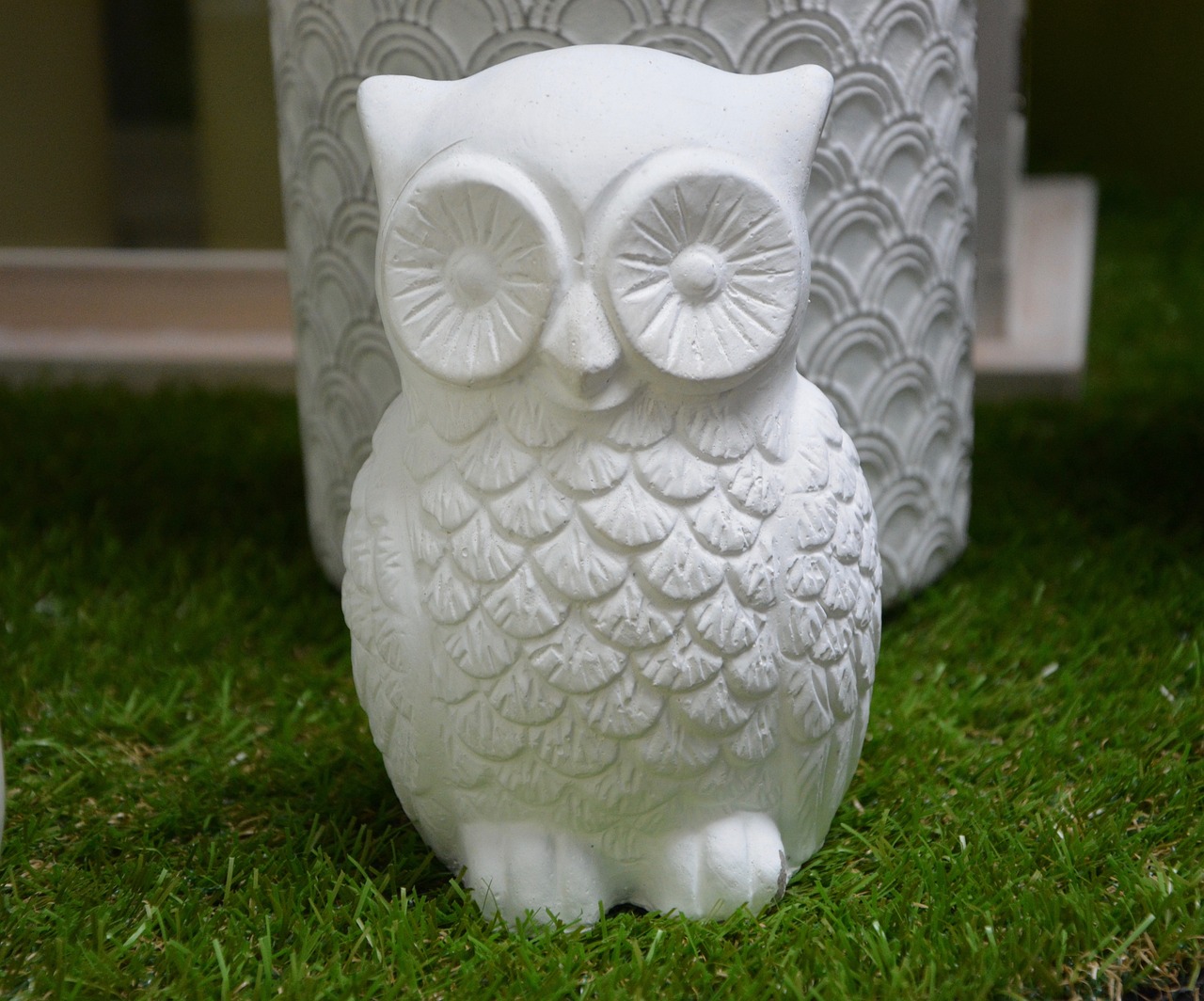
Choosing Your Objects
When it comes to sketching, the objects you choose to draw can significantly influence your learning experience and artistic growth. Selecting a variety of objects is not just about filling your canvas; it’s about challenging yourself and expanding your observational skills. Think of it this way: if you always draw the same thing, it’s like running the same route every day—eventually, it becomes monotonous. By diversifying your subjects, you’ll keep your practice fresh and engaging.
Start by considering objects that offer different shapes, sizes, and textures. For instance, a smooth apple, a crumpled piece of paper, and a rough stone can all provide unique challenges. Each object will require you to observe and depict its distinct characteristics. You might want to group your chosen objects based on certain themes or textures, which can help you focus on specific skills. Here are some categories you might explore:
- Natural Objects: Fruits, vegetables, flowers, and leaves.
- Everyday Items: Kitchen utensils, books, or furniture.
- Textured Surfaces: Fabrics, wood, or metals.
Additionally, consider the scale of your objects. Mixing small items with larger ones can create interesting compositions and help you practice both detail and proportion. A tiny figurine next to a large vase can challenge your ability to maintain perspective and scale, which is crucial for realistic sketching. Remember, it’s not just about what you draw, but how you draw it.
Another essential factor to consider is the arrangement of your objects. The composition plays a vital role in how you perceive and depict your subjects. Try different arrangements to see how they affect the overall balance and flow of your sketch. For example, placing objects in a triangular formation can create a sense of stability, while a more chaotic arrangement might convey energy and movement.
Finally, don’t shy away from experimenting with unusual or unconventional objects. Sometimes, the most unexpected items can lead to the most exciting sketches. A broken toy, a tangled piece of string, or even your pet’s favorite toy can provide a unique perspective that challenges your creativity. Embrace the unexpected, and let your imagination run wild!
Q: What types of objects are best for beginners?
A: Beginners should start with simple objects like fruits or everyday items. These are easier to observe and sketch, helping to build confidence.
Q: How can I improve my observational skills while sketching?
A: Focus on the shapes, shadows, and textures of your objects. Take your time to really observe before you start drawing. Practice regularly, and try to draw from life as much as possible.
Q: Is it necessary to stick to realistic objects?
A: Not at all! While realism is important, experimenting with abstract or fantastical objects can also enhance your creativity and help you develop your unique style.
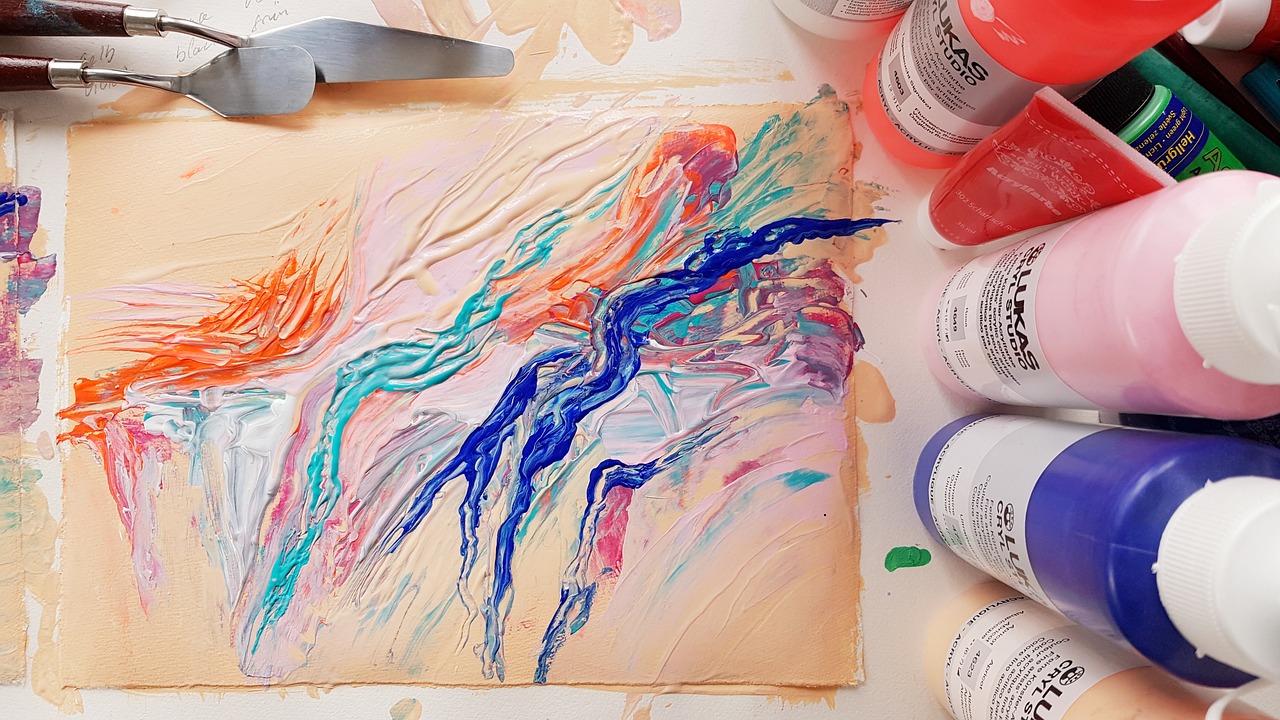
Lighting Techniques
Lighting is one of the most critical aspects of sketching that can dramatically change the way your artwork is perceived. By understanding how light interacts with objects, you can create sketches that not only look realistic but also evoke emotions. Imagine walking into a room where the sunlight streams through the windows, casting beautiful shadows and highlights on the surfaces. This play of light can transform a mundane scene into something captivating, and your sketches can do the same!
To effectively utilize lighting in your sketches, you need to experiment with different lighting conditions. For instance, consider the time of day and how it affects the quality of light. Morning light is soft and warm, while the harsh afternoon sun creates stark contrasts. By observing these changes, you can learn to depict volume and depth in your drawings. A great exercise is to set up a simple still life with a single light source and observe how it alters the appearance of your objects.
Here are some crucial lighting techniques to consider:
- Chiaroscuro: This technique involves using strong contrasts between light and dark to create a three-dimensional effect. Practice by sketching a sphere with a light source directed at it, illustrating how shadows form on the opposite side.
- Backlighting: When light comes from behind your subject, it creates a silhouette effect. This can be particularly striking and can add an air of mystery to your sketches. Experiment with this technique to see how it changes the perception of your subject.
- Reflected Light: Often overlooked, reflected light can help you achieve a more realistic representation of your subject. Pay attention to how light bounces off surfaces and illuminates other areas, adding subtle highlights to your sketches.
Remember, the key to mastering lighting techniques is practice. Set aside time to sketch in various lighting conditions and observe how shadows and highlights interact. Take notes on how different light sources affect the mood and depth of your sketches. Over time, you'll develop an intuitive understanding of how to manipulate light to enhance your artistic expression.
1. How can I improve my understanding of light and shadow in sketching?
To improve your understanding of light and shadow, practice sketching under different lighting conditions. Observe how light interacts with various surfaces and experiment with techniques like chiaroscuro and backlighting.
2. What materials are best for practicing lighting techniques?
Pencils, charcoal, and ink are excellent materials for practicing lighting techniques. Each medium offers unique qualities that can help you explore different aspects of light and shadow.
3. Should I focus on one lighting technique at a time?
Yes, focusing on one technique at a time allows you to fully understand its nuances. Once you're comfortable with a particular technique, you can start combining them in your sketches for more complex effects.

Gesture Drawing
Gesture drawing is an exhilarating way to capture the essence of a subject in a short amount of time. Imagine trying to catch the fleeting moment of a dancer's leap or the relaxed pose of a friend lounging on the couch. This practice focuses on the movement and energy of the subject rather than the details, allowing you to express emotion and dynamism through your sketches. The beauty of gesture drawing lies in its spontaneity; it encourages you to let go of perfection and embrace the rawness of your artistic instincts.
To get started with gesture drawing, consider setting a timer for each session. You might begin with quick 30-second sketches to warm up, gradually increasing the time to a couple of minutes as you become more comfortable. This approach not only helps in improving your speed but also trains your eye to recognize the fundamental shapes and lines that define a pose. Remember, the goal here is not to create a masterpiece but to capture the movement and flow of the subject. Think of it as a dance between your pencil and the paper!
During your gesture drawing sessions, you can experiment with different techniques to enhance your skills. For instance, try using various line weights to convey depth and emphasis, or incorporate different materials like charcoal or ink to add a unique flair to your sketches. Each medium can bring out different qualities in your drawings, so don’t hesitate to explore!
Here are some tips to keep in mind while practicing gesture drawing:
- Focus on Movement: Pay attention to how the body moves and flows. Capture the energy rather than getting bogged down by details.
- Use Simple Shapes: Break down the figure into basic shapes to simplify the drawing process. This helps in maintaining proportion and balance.
- Stay Loose: Keep your wrist relaxed and your strokes fluid. This will help you create more dynamic lines that reflect the movement.
- Practice Regularly: Consistency is key! Make gesture drawing a part of your routine to see significant improvement over time.
Incorporating gesture drawing into your sketching practice can be a game-changer. It not only enhances your observational skills but also builds your confidence as an artist. As you become more adept at capturing movement, you’ll find that your overall drawing skills improve, allowing you to tackle more complex subjects with ease. So grab your sketchbook and get started on this exciting journey of fluid expression!
Q: How long should I spend on each gesture drawing?
A: Start with 30 seconds to 2 minutes for each pose to capture the essence quickly. As you gain experience, you can extend this time to refine your sketches.
Q: What materials are best for gesture drawing?
A: You can use anything from pencils and charcoal to ink and pastels. Each medium offers a different experience, so feel free to experiment!
Q: Can gesture drawing improve my overall drawing skills?
A: Absolutely! Gesture drawing enhances your observational skills and confidence, which are crucial for all types of drawing.
Q: How can I find subjects for gesture drawing?
A: You can draw from live models, attend dance performances, or even sketch your friends in casual poses. Online resources and videos can also provide great reference material.

Week 3: Exploring Different Mediums
In the third week of our month-long sketching journey, we dive into the exciting world of different sketching mediums. Each medium offers a unique way to express your artistic vision, and experimenting with them can unlock new dimensions in your artwork. Think of it as trying on different outfits; each one can change how you feel and how you present yourself. Whether you prefer the softness of pencil, the boldness of charcoal, or the precision of ink, this week is all about finding what resonates with you.
Let’s start with the classic pencil. It’s like the bread and butter of sketching, providing a versatile tool for artists of all levels. With pencils, you can create everything from delicate, light sketches to deep, dark lines. The ability to easily erase and adjust your work makes it ideal for beginners who are still finding their footing. Remember, the pressure you apply can dramatically affect the line quality, so practice varying your grip and pressure to see how it transforms your sketches.
Next up is charcoal, a medium that brings a whole new level of drama to your drawings. It’s known for its rich blacks and ability to create stunning contrasts. If you want to add depth and emotion to your sketches, charcoal is your go-to. However, it can be a bit messy, so be prepared to embrace the smudges! When working with charcoal, consider the following:
- Layering: Build up layers to create texture and depth.
- Blending: Use your fingers or a blending stump to soften lines and create gradients.
- Erasing: A kneaded eraser can help you pull out highlights and create stunning contrasts.
Then we have ink, a medium that introduces a level of precision that can elevate your sketches to new heights. Ink sketching often requires a steady hand and a confident approach, as mistakes are harder to correct. However, the crispness and clarity it provides can be incredibly rewarding. Using different types of pens, such as fine liners or brush pens, can produce varied effects. Here’s a quick comparison of the benefits of each:
| Medium | Benefits |
|---|---|
| Pencil | Versatile, easy to erase, great for detailed work |
| Charcoal | Rich blacks, dramatic shading, great for depth |
| Ink | Precision, clarity, and the ability to create intricate details |
As you explore these mediums, don’t hesitate to mix and match! Combining pencil with ink can create beautiful textures and layers in your sketches. Think of it as a culinary experiment; sometimes, the best dishes come from unexpected combinations. The key is to play around and see what works best for your style.
In this week, challenge yourself to create at least one piece in each medium. By the end of the week, you’ll not only have a diverse portfolio but also a better understanding of how different tools can influence your artistic expression. So, grab your sketchbook, gather your materials, and let your creativity flow!
Q1: Why should I explore different sketching mediums?
A1: Exploring different mediums can help you discover your unique artistic voice and enhance your skills. Each medium offers different qualities and effects that can elevate your artwork.
Q2: Which medium is best for beginners?
A2: Pencil is often recommended for beginners due to its versatility, ease of use, and the ability to erase mistakes. It allows you to practice without the pressure of permanent marks.
Q3: Can I combine different mediums in one sketch?
A3: Absolutely! Mixing mediums can create interesting textures and effects, adding depth and dimension to your work. Experimentation is key in finding what works best for you.
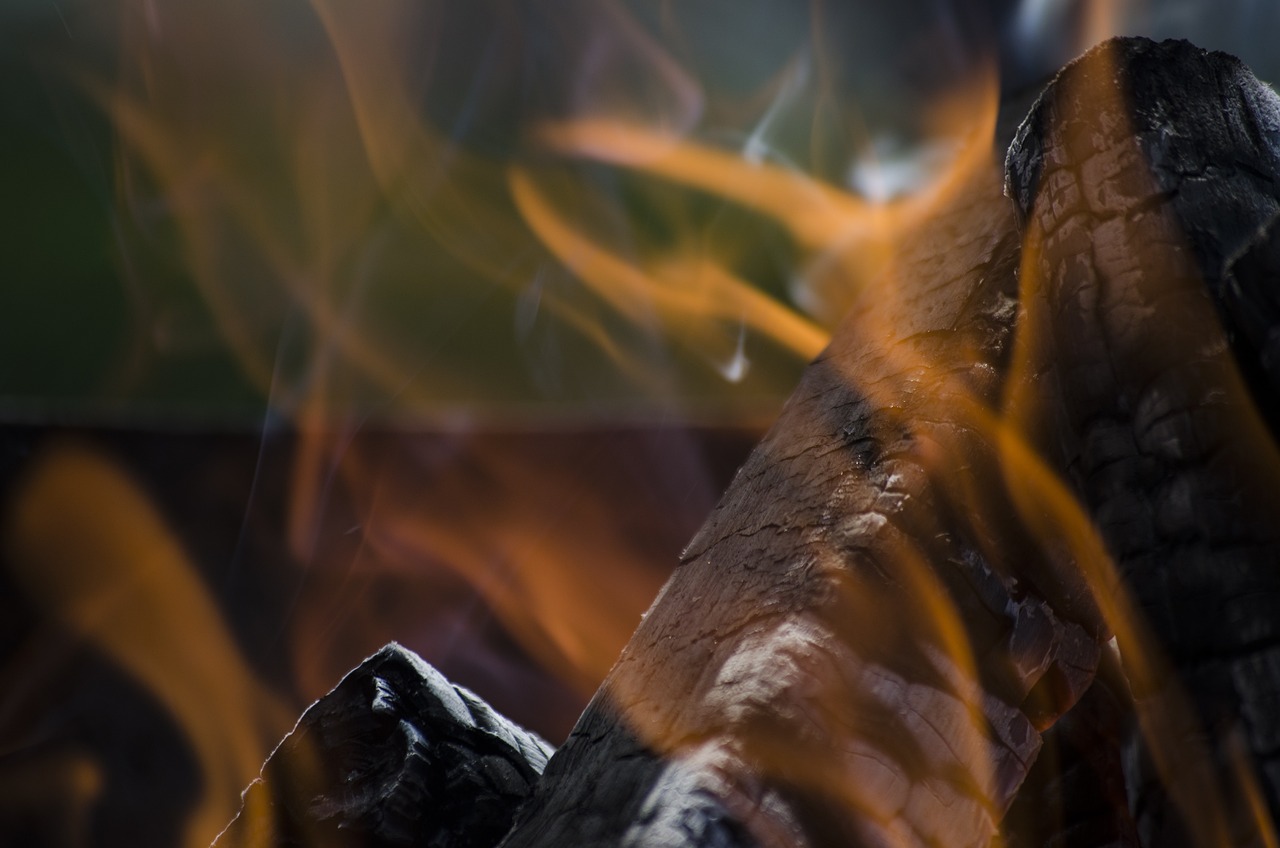
Benefits of Charcoal
This article provides a structured, month-long approach to improving your sketching skills. Each week focuses on different techniques and exercises to help you develop your artistic abilities progressively.
In the first week, we will cover the essential drawing techniques, including line quality, shapes, and shading. Understanding these fundamentals will set a strong base for your sketching journey.
The second week emphasizes the importance of observational drawing. By practicing with real-life subjects, you will learn to capture proportions, perspectives, and details that enhance your sketches.
Engaging in still life drawing will help you focus on composition and light. This practice encourages you to observe how objects interact and the way light affects their appearance.
Selecting a variety of objects with different textures and shapes will challenge your skills and improve your ability to depict realism in your sketches.
Experimenting with different lighting conditions can significantly change the mood of your sketches. Learning to manipulate light will enhance your understanding of volume and depth.
Gesture drawing sessions will enhance your ability to quickly capture the essence of a subject. This practice is crucial for developing fluidity and confidence in your sketches.
In the third week, we will explore various sketching mediums such as pencil, charcoal, and ink. Each medium offers unique qualities that can express your artistic vision differently.
Charcoal is a fantastic medium that can transform your sketching experience. One of the most significant benefits of using charcoal is its ability to create bold lines and dramatic shading. This versatility allows artists to express emotion and depth in their work, which can be particularly captivating. Here are some reasons why charcoal can be a game-changer for your sketches:
- Rich Contrast: Charcoal provides a deep black that can contrast beautifully with lighter shades, making your drawings pop.
- Blending Capabilities: The soft texture of charcoal allows for easy blending, enabling artists to create smooth transitions between tones.
- Expressive Mark-Making: Charcoal can be applied in various ways, from fine lines to broad strokes, giving you the freedom to explore different styles.
Moreover, charcoal encourages experimentation. Its forgiving nature means that mistakes can easily be erased or adjusted, allowing you to take risks without the fear of ruining your work. This can be liberating, especially for beginners who might feel intimidated by more permanent mediums. You can layer and build up textures, making it an ideal choice for capturing complex subjects like portraits or landscapes.
Additionally, charcoal is relatively inexpensive and widely available, making it accessible for artists at every level. Whether you're sketching in a studio or outdoors, a few sticks of charcoal and some paper can easily accompany you on your artistic journeys. So, if you're looking to add a new dimension to your sketches, consider picking up some charcoal and exploring its unique properties!
The final week focuses on finding and refining your personal style. We will discuss how to combine techniques learned throughout the month and develop a unique artistic voice.
Drawing inspiration from other artists can help you discover elements you want to incorporate into your work. This practice can lead to a more authentic personal style.
Establishing a consistent sketching routine will encourage growth and experimentation. A dedicated sketchbook can serve as a canvas for your evolving style and ideas.
Q: What is the best paper for charcoal sketching?
A: Look for paper that has a bit of texture, like charcoal paper or drawing paper with a tooth, as it will hold the charcoal better and allow for more blending.
Q: Can I use charcoal for detailed work?
A: Absolutely! While charcoal is great for bold, expressive strokes, it can also be used for fine details with the right techniques and tools, like charcoal pencils.
Q: How do I fix my charcoal drawings?
A: To prevent smudging, you can use a fixative spray designed for charcoal. Make sure to spray it in a well-ventilated area and follow the instructions on the can.

Ink Techniques
When it comes to sketching, ink is a game changer. It introduces a level of precision and detail that can elevate your drawings from simple sketches to striking pieces of art. But how do you harness the power of ink effectively? The first step is understanding the different tools available to you. From fine liners to brush pens, each tool offers unique capabilities that can transform your artistic expression.
One of the most exciting aspects of ink sketching is the variety of techniques you can employ. For instance, hatching and cross-hatching are fundamental methods for creating depth and texture. Hatching involves drawing parallel lines to build up shading, while cross-hatching adds a layer of complexity by intersecting lines at various angles. This technique can be particularly effective when rendering shadows and creating a sense of volume in your sketches.
Additionally, using stippling—the process of creating images with small dots—can add a unique texture to your work. It’s a time-consuming technique, but the results can be stunning. Imagine creating a portrait where the subtle gradations of light and shadow are depicted solely through dots! It’s like painting with a pointillist approach, but with ink.
Another essential technique is ink washes. This involves diluting ink with water to create softer tones and gradients, allowing for a more painterly effect. By mastering ink washes, you can add depth to landscapes or atmospheric elements in your sketches. The beauty of ink washes lies in their unpredictability; each stroke can yield a different result, making every piece truly unique.
To get started with ink techniques, consider the following tips:
- Experiment with different types of ink pens. Each pen can produce a distinct line quality, so try out a few to see what suits your style best.
- Practice layering your ink. Start with lighter strokes and gradually build up to darker areas, allowing for more control over your shading.
- Don't be afraid to make mistakes. Ink is unforgiving, but sometimes those unexpected marks can lead to creative breakthroughs.
Incorporating these ink techniques into your sketching practice can open up a world of possibilities. The precision of ink allows you to create intricate details, while the various techniques offer ways to express mood and texture. As you continue to explore and experiment with ink, you’ll find your own unique voice emerging on the page.
Q: What type of ink is best for sketching?
A: The best type of ink depends on your personal preference and the effect you want to achieve. Waterproof ink is great for layering, while non-waterproof ink can be used for washes. Experiment with different brands to find what works best for you.
Q: Can I use regular pens for ink sketching?
A: While you can use regular pens, they may not provide the same level of control or versatility as specialized ink pens. Investing in a few quality ink pens can significantly enhance your sketching experience.
Q: How can I fix mistakes made with ink?
A: Mistakes in ink can be challenging to fix, but you can embrace them as part of your artistic journey. You can also use white ink or correction fluid to cover small errors. Alternatively, consider incorporating the mistake into your design creatively.
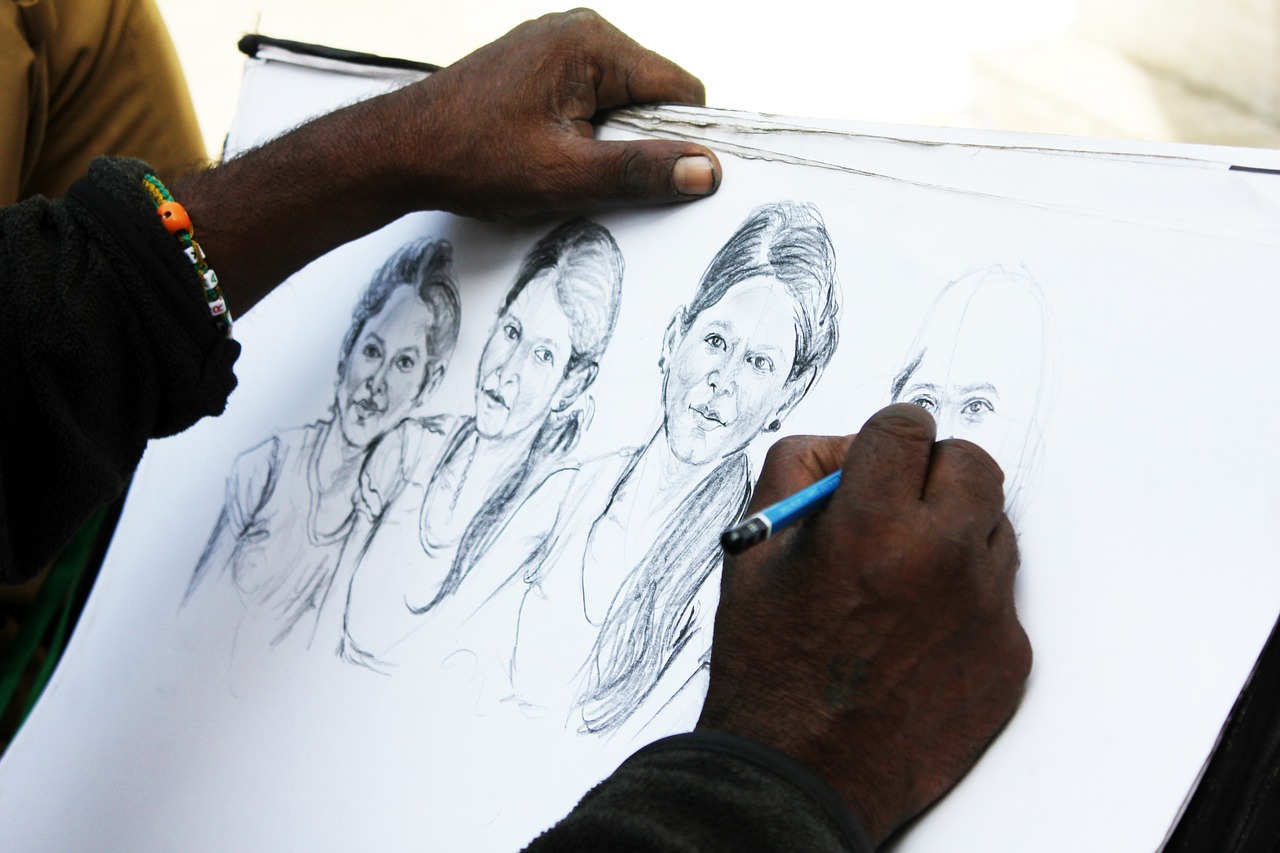
Week 4: Personal Style Development
As we reach the final week of our month-long sketching journey, it's time to focus on one of the most exciting aspects of being an artist: developing your personal style. This week is all about taking everything you've learned so far and weaving it into a unique tapestry that reflects your artistic voice. Just like a chef experimenting with flavors, you’ll discover how to blend techniques and mediums to create something distinctly yours.
Finding your personal style is akin to discovering your signature dish. It’s a mix of what you love, what you’ve learned, and what feels authentic to you. So, how do we get there? First, let’s explore the importance of incorporating inspiration from other artists. This doesn’t mean copying their work; rather, it’s about seeing what resonates with you. Consider the following:
- What elements of their style do you admire?
- How can you adapt those elements to fit your own vision?
- What themes or subjects do you find yourself drawn to?
By engaging with the work of others, you can identify the aspects you want to incorporate into your sketches. This process can be enlightening, revealing not just what you enjoy but also what inspires you to create. You might find that certain colors, textures, or techniques speak to you on a deeper level, guiding you toward a more authentic expression of your artistry.
Next, let’s talk about the importance of establishing a sketchbook routine. Think of your sketchbook as a playground for your creativity. By dedicating time to sketch regularly, you’ll encourage growth and experimentation. This doesn’t have to be a daunting task; it can be as simple as setting aside 15 minutes each day to doodle, practice new techniques, or explore ideas. Here are some tips to create an effective sketchbook routine:
- Choose a comfortable space where you feel inspired.
- Set a specific time each day to sketch, making it a part of your daily routine.
- Keep your sketchbook accessible so you can jot down ideas whenever inspiration strikes.
As you fill your sketchbook, you’ll begin to notice patterns in your work. Perhaps you gravitate toward certain subjects, or maybe you find a particular technique that feels right. This is the essence of developing a personal style. Just like a musician finds their sound through practice and exploration, you’ll refine your artistic voice through consistent sketching.
Finally, remember that developing a personal style is an ongoing journey. It’s perfectly normal for your style to evolve over time, just as your tastes in music or fashion might change. Embrace this fluidity and allow your sketches to reflect your growth as an artist. The key is to stay curious, keep experimenting, and most importantly, enjoy the process!
At the end of this week, you should feel empowered to take the skills you’ve honed and express them in a way that feels true to you. So grab your sketchbook, let your imagination run wild, and watch as your unique artistic voice begins to flourish.
Q: How do I know if I have developed a personal style?
A: Your personal style often emerges through consistent practice and exploration. If you find yourself gravitating toward specific subjects, techniques, or themes in your work, that’s a sign of your unique style taking shape.
Q: Can I change my personal style over time?
A: Absolutely! Personal style is not static; it evolves as you grow as an artist. Feel free to experiment and let your style change as you explore new techniques and inspirations.
Q: What if I feel stuck and can’t find my style?
A: It’s common to feel stuck at times. Try seeking inspiration from various artists, experimenting with different mediums, or even taking a break to refresh your perspective. The key is to stay open and curious.

Incorporating Inspiration
Finding your artistic voice can sometimes feel like searching for a needle in a haystack. But, what if I told you that inspiration is all around you, waiting to be discovered? By incorporating inspiration from various sources, you can enrich your sketches and develop a unique style that resonates with your artistic vision. Think of inspiration as the fuel that ignites your creativity; without it, your artistic journey might feel a bit like driving on empty. So, how do you capture that spark and infuse it into your work?
One effective way to incorporate inspiration is by studying the work of other artists. This doesn’t mean copying their style but rather understanding the techniques they use and the emotions they convey. Consider creating a mood board or a digital collection of artworks that resonate with you. This visual reference can serve as a guide during your sketching sessions, helping you to explore new ideas and techniques. You might find that a specific color palette or composition catches your eye, prompting you to experiment with it in your own work.
Additionally, immersing yourself in different environments can lead to unexpected bursts of creativity. Take a stroll through a local park, visit an art gallery, or even explore urban landscapes. Each setting offers unique perspectives and subjects that can inspire your sketches. For instance, observing the interplay of light and shadow in a bustling city can lead to exciting ideas for your next piece. Remember, inspiration often comes from the most mundane moments; it’s about training your eye to see the artistic potential in everyday life.
Here are some practical tips to help you incorporate inspiration into your sketching routine:
- Keep a Sketch Journal: Regularly jot down ideas, observations, and snippets of inspiration that come to you throughout the day. This journal can be a treasure trove of concepts to explore later.
- Join Art Communities: Engage with fellow artists online or in person. Sharing your work and receiving feedback can open up new avenues of inspiration and collaboration.
- Experiment with Styles: Don’t be afraid to try out different techniques or styles that inspire you. This experimentation can lead to unexpected discoveries and help you refine your personal style.
Finally, remember that inspiration is not a one-time event; it’s an ongoing process. Stay curious and open-minded, and you’ll find that your artistic journey becomes richer and more fulfilling. Just like a chef who tastes and adjusts their dish, you too can mix and match elements from various sources to create something uniquely yours. So, go ahead—embrace the inspiration around you and watch your sketches come to life!
Q: How can I find inspiration for my sketches?
A: Inspiration can be found in many places, including nature, art galleries, everyday life, and even in the work of other artists. Keeping a sketch journal and joining art communities can also help you discover new ideas.
Q: Is it okay to draw inspiration from other artists?
A: Absolutely! Drawing inspiration from other artists is a great way to learn and grow. Just remember to develop your unique style and avoid copying their work directly.
Q: How often should I sketch to improve my skills?
A: Consistency is key! Aim to sketch regularly, whether it's daily or a few times a week. The more you practice, the more you’ll improve your skills and develop your style.
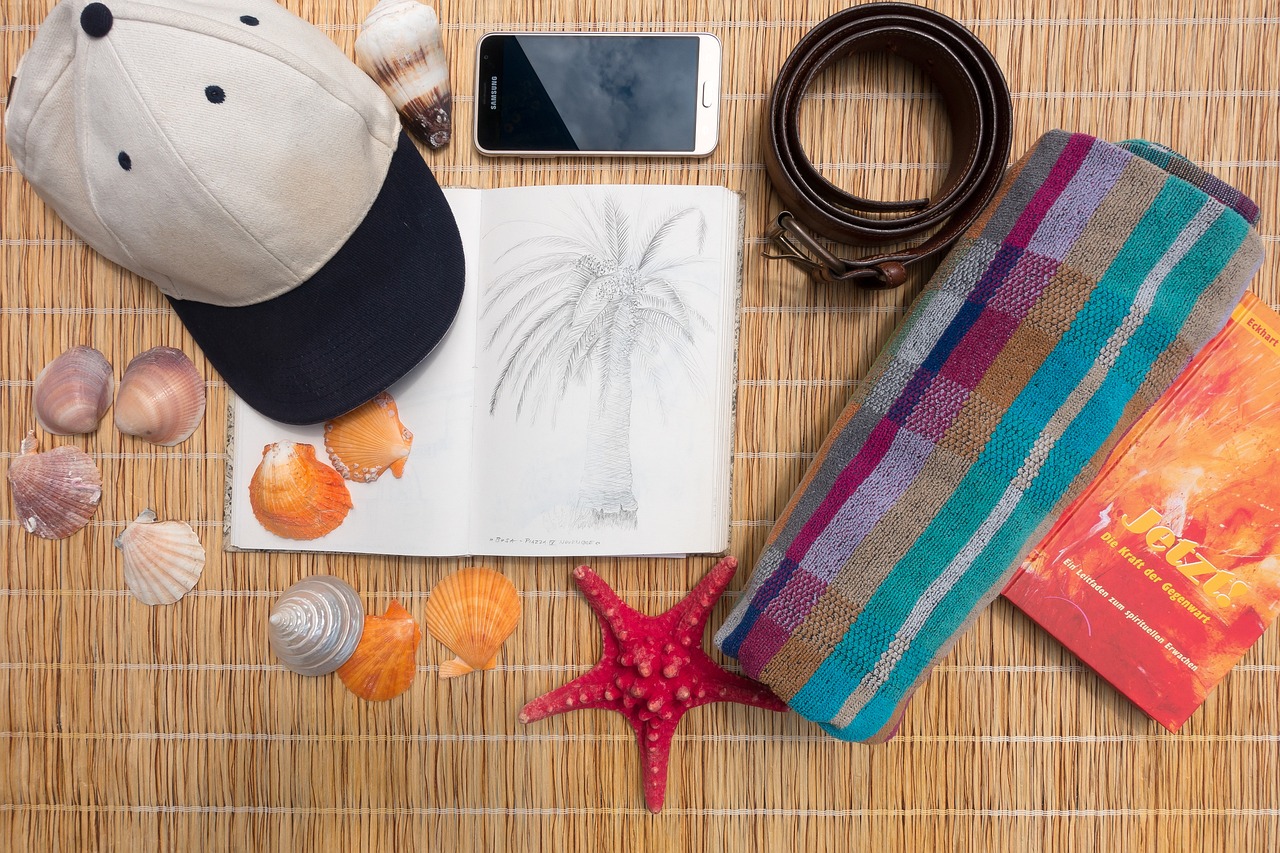
Creating a Sketchbook Routine
Establishing a consistent sketchbook routine is like planting a seed that, with care and attention, will grow into a flourishing garden of creativity. Just like any skill, sketching benefits immensely from regular practice. But how do you create a routine that not only fits into your busy life but also inspires you to keep going? Here are some tips to help you cultivate that artistic habit.
First, consider setting aside a specific time each day or week dedicated solely to sketching. This could be as little as 15 minutes or as long as an hour, depending on your schedule. The key is to make it a non-negotiable part of your day, similar to how you would treat a meeting or a workout. By doing so, you create a space where your creativity can flow freely without the distractions of daily life.
Next, think about the environment where you’ll sketch. Find a cozy nook in your home or a vibrant spot in a local park. The setting can significantly influence your mood and creativity. A quiet corner with good lighting can help you focus, while a lively café might spark inspiration from the people and surroundings. Don't hesitate to experiment with different locations until you find your sweet spot!
Another essential aspect of your sketchbook routine is to keep it accessible. Always have your sketchbook and tools within reach. Whether it’s on your desk, in your bag, or by your bedside, having your materials handy means you can seize those spontaneous moments of inspiration. You never know when a creative idea might strike!
To keep things fresh, try varying your subjects and techniques. One day, you might focus on gesture drawing, capturing the essence of movement, while on another day, you could delve into detailed still life studies. Mixing it up not only keeps your routine exciting but also challenges your skills and encourages growth. You might even consider setting weekly themes or prompts to guide your sketching sessions.
Finally, don’t forget to reflect on your progress. Take a moment at the end of each week to flip through your sketches. What do you love? What would you like to improve? This reflection not only helps you recognize your growth but also fuels your motivation to keep sketching. Remember, every line you draw is a step on your artistic journey!
In summary, creating a sketchbook routine is about finding a rhythm that works for you, setting aside dedicated time, and keeping your materials close at hand. With a bit of experimentation and reflection, you’ll not only enhance your skills but also deepen your love for sketching. So grab that sketchbook, and let your creativity soar!
- How often should I sketch?
Aim for at least a few times a week, but daily sketching can yield the best results. - What materials do I need for sketching?
A simple sketchbook and a few pencils or pens are all you need to get started! - Can I sketch anywhere?
Absolutely! The beauty of sketching is that you can do it anywhere—at home, in a café, or outdoors. - How do I stay motivated to sketch?
Set goals, try new techniques, and don’t be afraid to take breaks when needed. Remember, it’s all about enjoying the process!
Frequently Asked Questions
- What are the basic drawing techniques I should focus on during the first week?
In the first week, you should concentrate on mastering line quality, shapes, and shading. These fundamentals are crucial as they form the backbone of your sketching skills. Think of them as the building blocks that will support all your future artistic endeavors!
- How can observational drawing improve my sketching?
Observational drawing sharpens your ability to capture proportions, perspectives, and details from real-life subjects. It’s like training your eye to see the world as an artist does. By practicing this skill, you will notice a significant enhancement in the realism of your sketches.
- What should I consider when choosing objects for still life drawing?
When selecting objects for still life, aim for a variety of textures and shapes. This diversity will challenge your skills and push you to depict realism more effectively. It’s like creating a mini art gallery right in your workspace!
- What lighting techniques should I experiment with?
Experimenting with different lighting conditions can dramatically alter the mood of your sketches. Try drawing under natural light, artificial light, or even candlelight to see how each affects the perception of volume and depth in your work.
- How does gesture drawing benefit my sketching skills?
Gesture drawing is all about capturing the essence of a subject quickly. This practice helps you develop fluidity and confidence in your sketches, enabling you to convey movement and emotion effectively. Think of it as a warm-up for your artistic muscles!
- What are the benefits of using charcoal in my sketches?
Charcoal is fantastic for creating bold lines and dramatic shading, adding depth and contrast to your drawings. If you want to make your sketches pop, charcoal can be your best friend, allowing you to express your artistic vision with intensity!
- How can I refine my style during the last week?
In the final week, focus on combining all the techniques you've learned throughout the month. Draw inspiration from other artists and integrate elements that resonate with you. This process will help you carve out a unique artistic voice that reflects your personality.
- Why is it important to establish a sketchbook routine?
Creating a consistent sketchbook routine encourages growth and experimentation. It’s like having a personal safe haven for your ideas and creativity to flourish. A dedicated sketchbook allows you to track your progress and explore your evolving style over time.



















